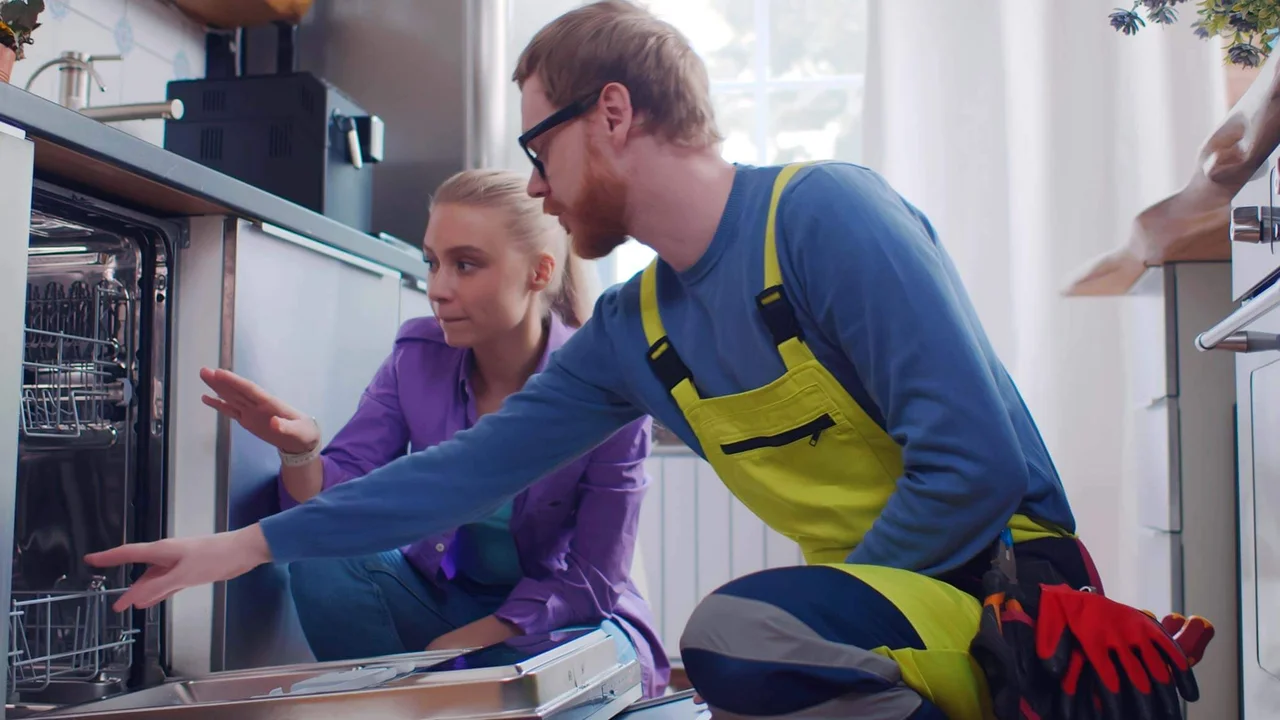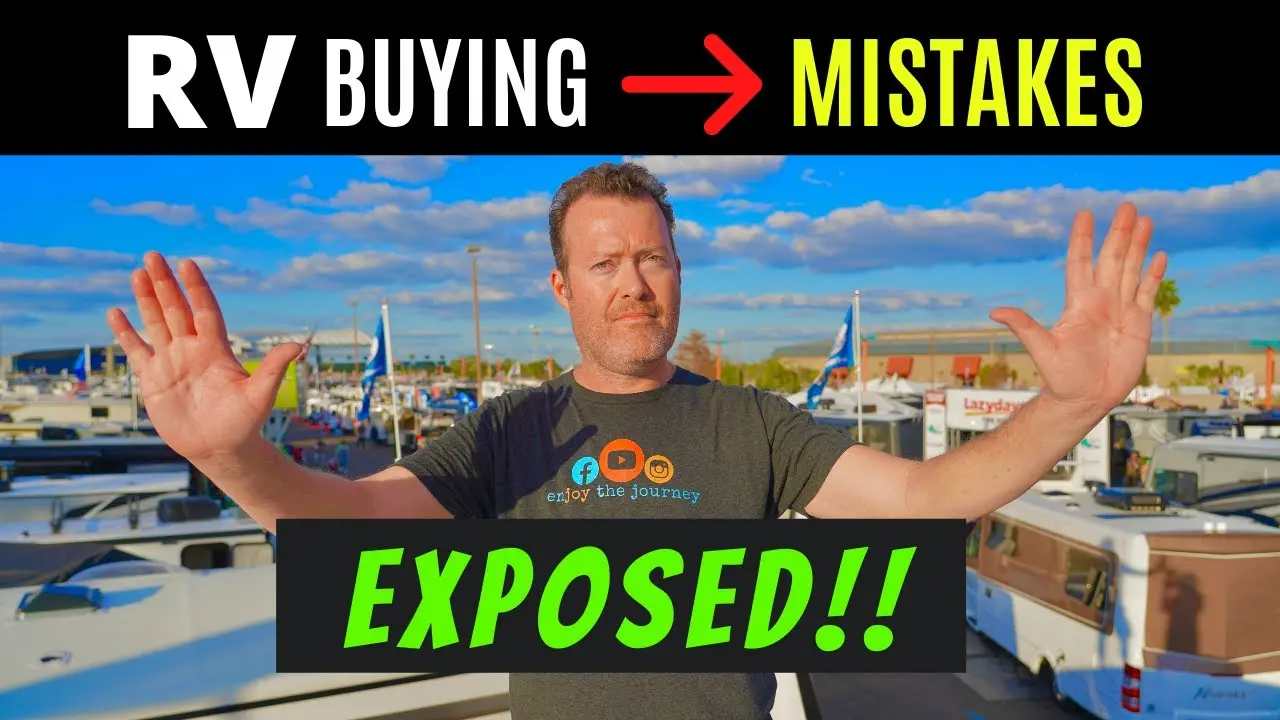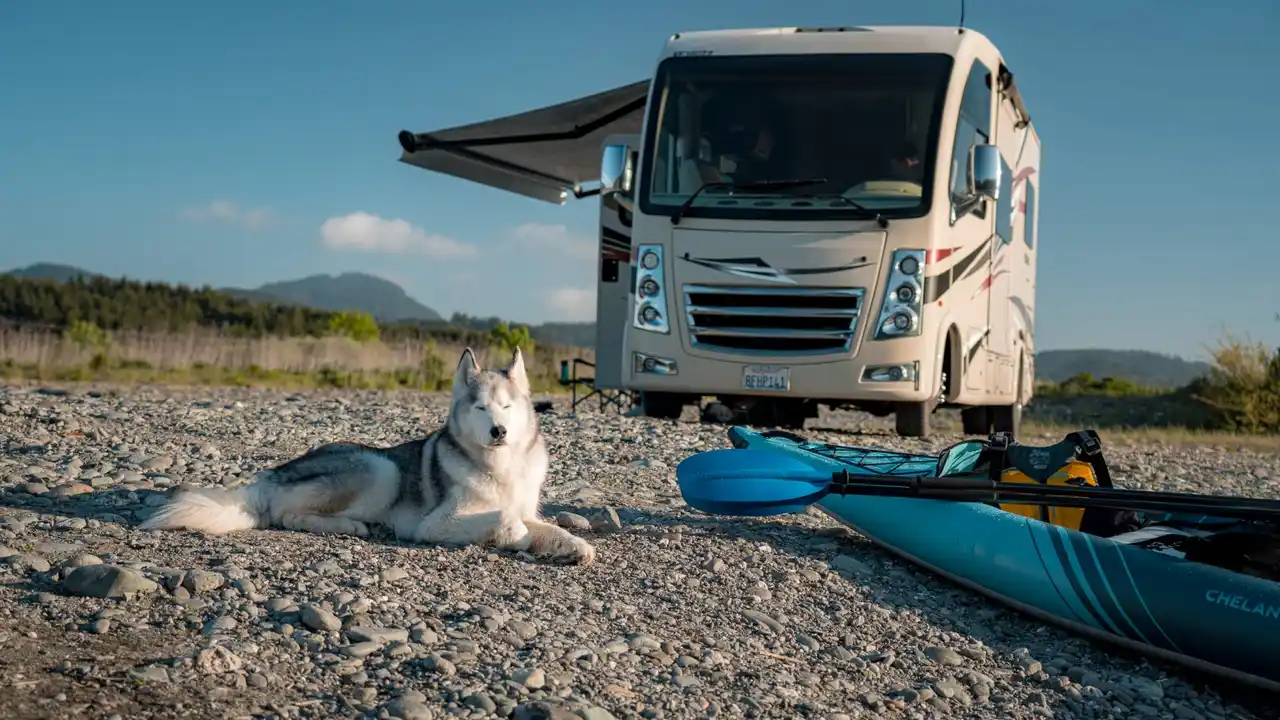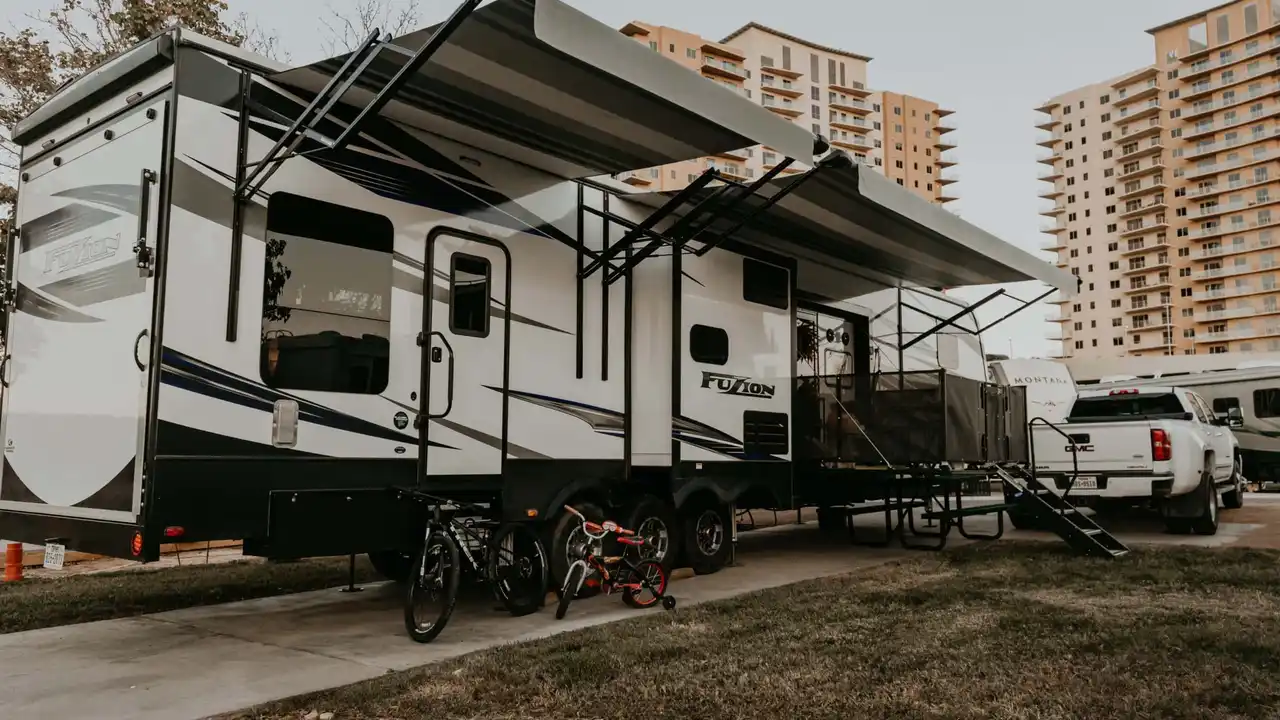RV Air Conditioners: Staying Cool in Hot Weather
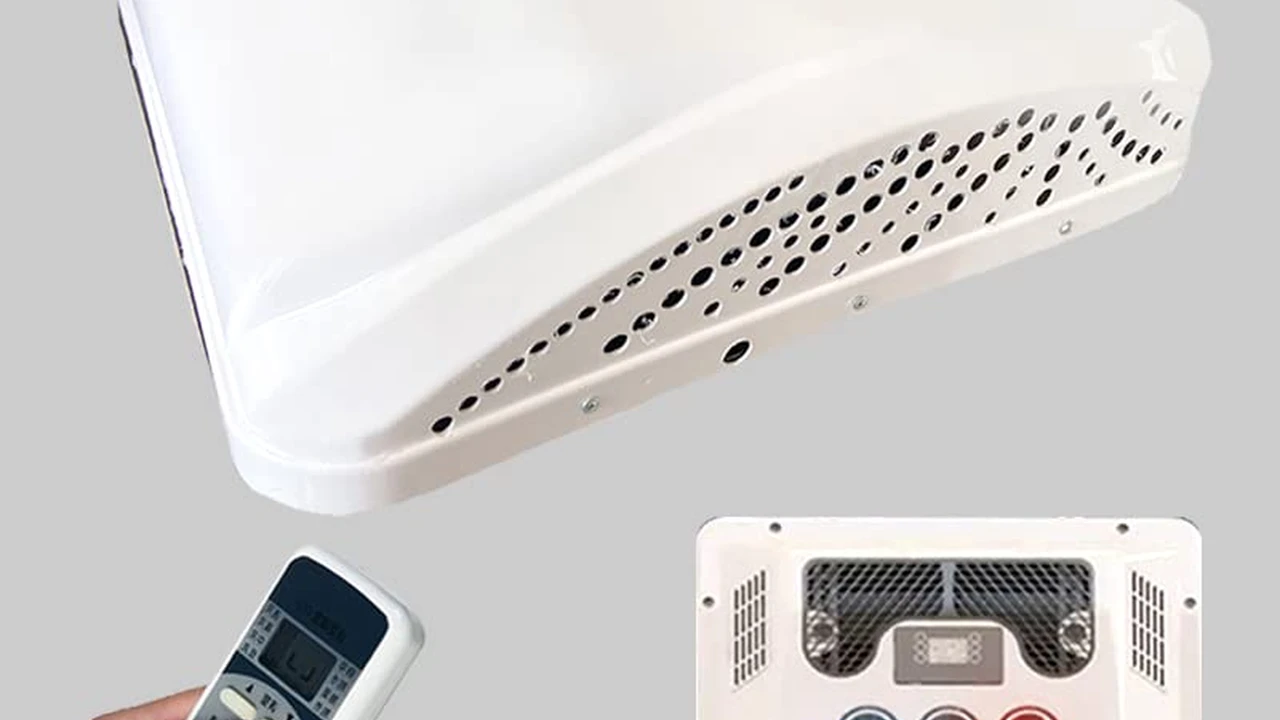
Understanding RV Air Conditioner Basics and Cooling Systems
So, you're hitting the road in your RV, chasing adventure, and making memories. But what happens when the sun decides to crank up the heat? That's where your RV air conditioner comes in, your trusty companion in the battle against sweltering temperatures. But before we dive into specific models and recommendations, let's get a handle on the basics. What exactly is an RV air conditioner, and how does it keep you cool?
Essentially, an RV air conditioner is a self-contained cooling unit designed to sit on the roof of your recreational vehicle. Think of it as a window AC unit, but beefier and specifically engineered for the vibrations and rigors of travel. They typically run on 120V AC power, meaning you'll need to be plugged into shore power at a campground or use a generator to operate them off-grid. Some newer models even offer 12V DC options for boondocking bliss.
There are two primary types of RV air conditioners: rooftop units and basement units. Rooftop units are the most common and are relatively easy to install. Basement units, as the name suggests, are installed in the RV's basement or storage compartment. They tend to be quieter and more efficient but are also more expensive and require professional installation. We'll focus primarily on rooftop units in this article, as they're the most widely used.
The cooling process itself is similar to any standard air conditioner. A refrigerant circulates through a closed system, absorbing heat from the inside air and releasing it outside. A compressor pumps the refrigerant, and a fan blows air across the cooling coils, distributing the chilled air throughout your RV. The efficiency of an RV air conditioner is measured in BTUs (British Thermal Units), with higher BTU ratings indicating greater cooling capacity. Choosing the right BTU rating for your RV is crucial for optimal performance, and we'll delve into that shortly.
Choosing the Right RV Air Conditioner BTU Rating and Size
Okay, so you know what an RV air conditioner is, but how do you determine the right size for your RV? This is a critical question, as an undersized unit will struggle to keep you cool, while an oversized unit will cycle on and off frequently, wasting energy and potentially damaging the compressor. The key is to match the BTU rating to the square footage of your RV.
As a general rule of thumb, you'll need about 20 BTUs per square foot of living space. So, if your RV is 200 square feet, you'll need an air conditioner with a BTU rating of around 4,000. However, this is just a starting point. Several other factors can influence the required BTU rating, including:
- Climate: If you frequently travel to hot and humid climates, you'll need a higher BTU rating than if you mostly camp in cooler regions.
- Insulation: RVs with poor insulation will require more cooling power. Consider adding insulation to your RV walls and roof to improve efficiency.
- Window Size and Placement: Large windows, especially those facing south or west, can let in a significant amount of heat. Consider using reflective window coverings or awnings to reduce solar gain.
- Number of Occupants: More people inside the RV will generate more heat, requiring a higher BTU rating.
- Appliances: Appliances like stoves and ovens can also contribute to the overall heat load.
To get a more accurate estimate of your cooling needs, consider using an online BTU calculator specifically designed for RVs. These calculators take into account all of the factors mentioned above and provide a more personalized recommendation. Don't be afraid to err on the side of slightly oversized, especially if you plan on camping in extremely hot conditions. It's better to have a little extra cooling power than not enough.
Here's a quick reference guide for common RV sizes and recommended BTU ratings:
- Small RVs (Under 20 feet): 5,000 - 8,000 BTUs
- Medium RVs (20-30 feet): 11,000 - 13,500 BTUs
- Large RVs (Over 30 feet): 15,000+ BTUs (May require multiple units)
Remember, these are just guidelines. Always consider your specific needs and consult with an RV technician if you're unsure.
Top RV Air Conditioner Brands and Models for Optimal Cooling
Now that you understand the basics of RV air conditioners and how to choose the right size, let's take a look at some of the top brands and models on the market. We'll cover a range of options, from budget-friendly choices to high-end models with advanced features.
Dometic RV Air Conditioners: A Trusted Name in Cooling
Dometic is one of the most well-known and respected brands in the RV industry, and their air conditioners are consistently rated among the best. They offer a wide range of models to suit different RV sizes and budgets. Here are a few of their most popular options:
- Dometic Brisk II: The Brisk II is a popular entry-level option that offers reliable cooling performance at an affordable price. It's available in various BTU ratings, making it suitable for a wide range of RVs. It features a streamlined design, a durable construction, and easy-to-use controls. Pricing typically ranges from $400 to $600.
- Dometic Penguin II: The Penguin II is a step up from the Brisk II, offering improved efficiency and quieter operation. It features a low-profile design, which reduces wind resistance and improves fuel economy. It's also equipped with a multi-speed fan and a digital thermostat for precise temperature control. Expect to pay between $600 and $800.
- Dometic Blizzard NXT: The Blizzard NXT is Dometic's premium RV air conditioner, offering exceptional cooling performance and a host of advanced features. It boasts a high BTU rating, a powerful fan, and a whisper-quiet operation. It also features a built-in dehumidifier and a programmable thermostat. This top-of-the-line model typically costs between $800 and $1200.
Coleman-Mach RV Air Conditioners: Powerful Cooling Solutions
Coleman-Mach is another leading manufacturer of RV air conditioners, known for their powerful cooling performance and durable construction. Their units are a popular choice for RVers who frequently camp in hot climates. Here are a couple of their standout models:
- Coleman-Mach 15: The Mach 15 is a high-capacity air conditioner designed for larger RVs. It delivers exceptional cooling power and features a durable motor and a robust construction. It's also equipped with a multi-speed fan and a user-friendly control panel. Pricing usually falls between $500 and $700.
- Coleman-Mach 8: The Mach 8 is a low-profile air conditioner that offers a good balance of cooling performance and fuel efficiency. Its aerodynamic design reduces wind resistance, and its quiet operation makes it a comfortable choice for overnight camping. Expect to pay around $600 to $800.
Other Notable RV Air Conditioner Brands
While Dometic and Coleman-Mach are the dominant players in the RV air conditioner market, several other brands offer quality products worth considering. These include:
- RecPro: RecPro offers a range of affordable RV air conditioners that are popular among budget-conscious RVers.
- Advent Air: Advent Air air conditioners are known for their innovative features and user-friendly designs.
- Furrion: Furrion offers a line of high-end RV air conditioners with advanced technology and sleek designs.
RV Air Conditioner Installation and Maintenance Tips
Once you've chosen the right RV air conditioner for your needs, it's time to install it. While some RVers are comfortable with DIY installation, it's generally recommended to have a professional technician handle the installation to ensure proper wiring and sealing. Improper installation can lead to leaks, electrical problems, and reduced cooling performance.
Here are a few tips for RV air conditioner installation:
- Read the Manufacturer's Instructions: This seems obvious, but it's crucial to carefully read and follow the manufacturer's instructions for your specific model.
- Ensure Proper Wiring: Use the correct gauge wire and make sure all connections are secure.
- Seal the Unit Properly: Use a high-quality sealant to prevent leaks around the air conditioner's base.
- Check for Proper Drainage: Ensure that the condensation drain is clear and properly routed.
Once your air conditioner is installed, regular maintenance is essential to keep it running smoothly and efficiently. Here are a few maintenance tips:
- Clean the Air Filters Regularly: Dirty air filters restrict airflow and reduce cooling performance. Clean or replace the air filters every few weeks, depending on usage.
- Inspect the Cooling Coils: Periodically inspect the cooling coils for dirt and debris. Clean them with a soft brush or a vacuum cleaner.
- Check the Fan Blades: Make sure the fan blades are clean and free of obstructions.
- Inspect the Condensation Drain: Check the condensation drain regularly to ensure it's clear and not clogged.
- Have the Unit Serviced Annually: It's a good idea to have your RV air conditioner professionally serviced once a year to ensure that all components are in good working order.
RV Air Conditioner Troubleshooting Common Issues and Solutions
Even with proper maintenance, RV air conditioners can sometimes experience problems. Here are a few common issues and their potential solutions:
- Air Conditioner Not Cooling: This could be due to a number of factors, including dirty air filters, low refrigerant levels, a faulty compressor, or a clogged condenser coil. Start by cleaning the air filters and inspecting the cooling coils. If the problem persists, consult with a qualified technician.
- Air Conditioner Leaking Water: This is usually caused by a clogged condensation drain. Clear the drain with a wire or a vacuum cleaner.
- Air Conditioner Making Loud Noises: This could be due to a loose fan blade, a worn-out motor, or a refrigerant leak. Inspect the fan blades and have the unit serviced by a technician.
- Air Conditioner Not Turning On: Check the circuit breaker to make sure it hasn't tripped. Also, check the wiring connections to ensure they're secure.
RV Air Conditioner Power Consumption and Energy Efficiency
RV air conditioners can consume a significant amount of power, especially when running continuously in hot weather. Understanding their power consumption and finding ways to improve energy efficiency is crucial for boondocking and reducing your reliance on shore power.
The power consumption of an RV air conditioner is typically measured in amps. A typical 13,500 BTU air conditioner draws around 12-15 amps on startup and 8-10 amps while running. This means that you'll need a generator or a shore power connection that can provide at least 30 amps to run the air conditioner safely.
Here are a few tips for improving the energy efficiency of your RV air conditioner:
- Park in the Shade: Parking in the shade can significantly reduce the amount of heat entering your RV, reducing the workload on your air conditioner.
- Use Reflective Window Coverings: Reflective window coverings can block out a significant amount of solar heat.
- Add Insulation: Improving the insulation in your RV walls and roof can help keep it cooler in the summer and warmer in the winter.
- Use a Fan: A fan can help circulate the cool air and make you feel more comfortable, even if the air conditioner isn't running at full blast.
- Consider a Soft Start Kit: A soft start kit reduces the startup current of your air conditioner, allowing you to run it on a smaller generator or a weaker shore power connection.
- Upgrade to a More Efficient Model: Newer RV air conditioners are often more energy-efficient than older models.
RV Air Conditioner Alternatives and Supplemental Cooling Options
While RV air conditioners are the most common way to cool an RV, they're not the only option. Here are a few alternatives and supplemental cooling options to consider:
- Evaporative Coolers (Swamp Coolers): Evaporative coolers use the evaporation of water to cool the air. They're most effective in dry climates.
- Portable Air Conditioners: Portable air conditioners can be used to cool specific areas of your RV.
- Fans: Fans are a simple and affordable way to circulate air and provide a cooling breeze.
- Ventilation: Opening windows and vents can help circulate air and reduce humidity.
- Awnings: Awnings can provide shade and reduce the amount of heat entering your RV.
RV Air Conditioner Costs and Budgeting Considerations
The cost of an RV air conditioner can vary depending on the brand, model, BTU rating, and features. Expect to pay anywhere from $400 to $1200 for a new rooftop unit. Installation costs can range from $200 to $500, depending on the complexity of the installation.
When budgeting for an RV air conditioner, consider the following factors:
- Purchase Price: The cost of the air conditioner itself.
- Installation Costs: The cost of having the unit installed by a professional.
- Operating Costs: The cost of running the air conditioner, including electricity or generator fuel.
- Maintenance Costs: The cost of regular maintenance, such as cleaning the air filters and having the unit serviced annually.
- Repair Costs: The potential cost of repairs in the event of a breakdown.
RV Air Conditioner Reviews and Comparisons Top Models Compared
Let's dive into some specific model comparisons to help you make the best decision for your needs. We'll pit popular models against each other, highlighting their strengths and weaknesses.
Dometic Brisk II vs. Coleman-Mach 15: Entry-Level Showdown
The Dometic Brisk II and Coleman-Mach 15 are both popular choices for RVers looking for reliable cooling at a reasonable price. The Brisk II is known for its ease of installation and user-friendly controls, while the Mach 15 boasts a higher BTU rating for more powerful cooling. The Brisk II is typically quieter, while the Mach 15 is more robust and durable. If you need maximum cooling power, the Mach 15 is the better choice. If you value ease of use and quieter operation, the Brisk II is a solid option.
Dometic Penguin II vs. Coleman-Mach 8: Mid-Range Excellence
Stepping up a level, the Dometic Penguin II and Coleman-Mach 8 offer improved efficiency and features. The Penguin II stands out with its low-profile design, reducing wind resistance. The Mach 8 is praised for its powerful cooling and durable construction. The Penguin II often includes features like a digital thermostat for precise temperature control. The Mach 8 generally has a slightly lower profile than the Penguin II, but the difference is minimal. The choice here depends on whether you prioritize aerodynamics (Penguin II) or raw cooling power (Mach 8).
Dometic Blizzard NXT vs. Furrion Chill: High-End Cooling Champions
For those seeking the ultimate in RV air conditioning, the Dometic Blizzard NXT and Furrion Chill are top contenders. The Blizzard NXT boasts a high BTU rating, a powerful fan, and whisper-quiet operation. The Furrion Chill is known for its sleek design, advanced technology, and features like a built-in dehumidifier. The Furrion Chill often incorporates smart features and remote control capabilities. The Blizzard NXT prioritizes raw cooling performance and quiet operation. Both are excellent choices, but the Furrion Chill leans towards technology and aesthetics, while the Blizzard NXT focuses on pure power and silence.
RV Air Conditioner Alternatives and Upgrades: Maximizing Comfort
Beyond the standard rooftop unit, there are several ways to enhance your RV's cooling system. Let's explore some alternatives and upgrades.
Soft Start Kits: A Game Changer for Generator Users
A soft start kit reduces the inrush current required to start your RV air conditioner. This is particularly beneficial if you're running your AC on a generator, as it can prevent the generator from overloading. Soft start kits also reduce stress on the air conditioner's compressor, potentially extending its lifespan.
Basement Air Conditioners: A Quiet and Efficient Option
Basement air conditioners are installed in the RV's basement or storage compartment. They offer several advantages over rooftop units, including quieter operation, more efficient cooling, and a lower profile. However, they are also more expensive and require professional installation.
Mini-Split Systems: Ductless Air Conditioning for RVs
Mini-split systems are ductless air conditioning units that consist of an outdoor compressor and an indoor air handler. They offer highly efficient cooling and can be installed in specific areas of your RV. They are a more complex and expensive option, but they provide superior cooling performance and energy efficiency.
DIY Air Conditioning Solutions: When Simplicity is Key
For those on a tight budget or who enjoy DIY projects, there are several simple air conditioning solutions you can create yourself. These include using evaporative coolers, portable fans, and strategically placed ice packs. While these solutions won't provide the same level of cooling as a dedicated RV air conditioner, they can help make your RV more comfortable in hot weather.
RV Air Conditioner Future Trends: What's Next in Cooling Technology?
The RV air conditioning industry is constantly evolving, with new technologies and innovations emerging all the time. Here's a glimpse into the future of RV cooling.
Solar-Powered RV Air Conditioners: Harnessing the Sun's Energy
Solar-powered RV air conditioners are becoming increasingly popular as solar technology becomes more affordable and efficient. These systems use solar panels to generate electricity, which powers the air conditioner. This allows you to run your AC off-grid without relying on a generator or shore power.
Smart RV Air Conditioners: Integrated Control and Automation
Smart RV air conditioners are equipped with sensors and controllers that allow them to automatically adjust the temperature based on your preferences and the current conditions. They can also be controlled remotely via a smartphone app.
More Efficient Refrigerants: Reducing Environmental Impact
The RV industry is working to develop more efficient and environmentally friendly refrigerants for air conditioners. These new refrigerants will have a lower global warming potential and will help reduce the environmental impact of RV cooling.
Improved Insulation Materials: Minimizing Heat Transfer
Advances in insulation materials are helping to reduce the amount of heat that enters RVs, which reduces the workload on air conditioners. These new insulation materials are more effective at blocking heat and are also lighter and more durable.
RV Air Conditioner Practical Applications and Usage Scenarios
Let's consider some real-world scenarios where choosing the right RV air conditioner can make all the difference.
Boondocking in the Desert: Off-Grid Cooling Strategies
If you're planning to boondock in the desert, you'll need a reliable and energy-efficient air conditioning solution. Consider a solar-powered air conditioner or a soft start kit to minimize your generator usage. Also, take steps to reduce heat gain, such as parking in the shade and using reflective window coverings.
Traveling with Pets: Keeping Your Furry Friends Comfortable
If you're traveling with pets, it's essential to keep them comfortable in hot weather. Choose an air conditioner with a high BTU rating and a reliable thermostat. Also, make sure to provide plenty of water and shade for your pets.
Extended RV Living: Long-Term Cooling Solutions
If you're planning to live in your RV full-time, you'll need a durable and efficient air conditioning system. Consider a basement air conditioner or a mini-split system for superior cooling performance and energy efficiency. Also, invest in high-quality insulation to minimize heat gain.
RV Air Conditioner and Resale Value: An Investment in Comfort
While not always a primary consideration, the type and condition of your RV's air conditioner can impact its resale value. A well-maintained and efficient air conditioning system can be a selling point for potential buyers.
RV Air Conditioner Safety Precautions and Guidelines
Safety should always be a top priority when dealing with electrical appliances like RV air conditioners. Here are some essential safety precautions.
- Professional Installation: Unless you are highly skilled in electrical work, have your RV air conditioner professionally installed. Improper wiring can lead to fire hazards.
- Correct Voltage: Ensure your RV is properly wired to the correct voltage (usually 120V AC) and that your air conditioner is compatible.
- Overload Protection: Never overload your RV's electrical system. Running too many appliances simultaneously can trip breakers or even cause a fire.
- Regular Inspection: Regularly inspect the air conditioner's wiring, connections, and components for any signs of damage or wear.
- Carbon Monoxide Detectors: If you are using a generator to power your air conditioner, ensure you have working carbon monoxide detectors in your RV.
- Proper Ventilation: When running a generator, ensure it is properly ventilated to prevent carbon monoxide buildup.
RV Air Conditioner Environmental Impact and Sustainability
Let's acknowledge the environmental impact of RV air conditioning and explore ways to minimize its footprint.
- Energy Consumption: RV air conditioners consume a significant amount of energy. Consider using energy-efficient models and implementing strategies to reduce energy consumption.
- Refrigerant Leaks: Refrigerant leaks can contribute to global warming. Ensure your air conditioner is properly maintained to prevent leaks.
- Responsible Disposal: When replacing your RV air conditioner, dispose of the old unit responsibly. Contact a local recycling center or appliance disposal service.
- Sustainable Practices: Embrace sustainable practices, such as using solar power, reducing your reliance on air conditioning, and choosing eco-friendly products.
RV Air Conditioner Frequently Asked Questions (FAQ)
Let's address some common questions about RV air conditioners.
- Q: How often should I clean my RV air conditioner filters?
A: Clean your air conditioner filters every few weeks, depending on usage. Dirty filters restrict airflow and reduce cooling efficiency.
- Q: Can I run my RV air conditioner off a battery?
A: Most RV air conditioners require 120V AC power and cannot be run directly off a 12V battery. You would need a large inverter and a substantial battery bank to run an AC unit for any significant length of time. Newer 12V DC units are available, but they are typically lower BTU and have higher amp draw requirements.
- Q: What is a soft start kit, and do I need one?
A: A soft start kit reduces the inrush current required to start your RV air conditioner. This is beneficial if you're running your AC on a generator or a limited shore power connection.
- Q: How do I winterize my RV air conditioner?
A: To winterize your RV air conditioner, remove any standing water from the unit and cover it with a protective cover. Refer to your owner's manual for specific winterization instructions.
:max_bytes(150000):strip_icc()/277019-baked-pork-chops-with-cream-of-mushroom-soup-DDMFS-beauty-4x3-BG-7505-5762b731cf30447d9cbbbbbf387beafa.jpg)



